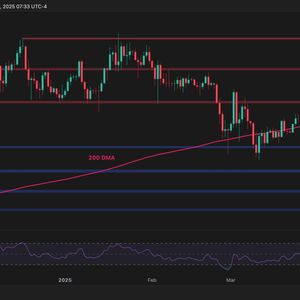VanEck’s Sigel proposes Bitcoin-backed bonds to help refinance US debt
3 min read
VanEck’s head of digital assets research, Matthew Sigel, has proposed solving the US debt problem by issuing Bitcoin Bonds (BitBonds) . In a post on X, he explained that the US government could use this product to refinance $14 trillion in debt. According to Sigel, BitBonds is a 10-year hybrid debt instrument with 90% exposure to US Treasury bonds and 10% Bitcoin. He proposed selling the bonds for $100, with proceeds from bond sales used to fund the 10% BTC exposure. BitBond Proposal (Source: Matthew Sigel) Under the proposal, investors will get all the BTC gains until the annualized yield-to-maturity hits 4.5% on the bond’s purchase value. After that, the government and investors will split the BTC gains equally. Upon maturity, bondholders redeem $90 on a $100 bond, along with the value of Bitcoin. Sigel proposed this at the recent Strategic Bitcoin Reserve Summit, noting that this solution will address the mismatched incentives of the government and investors. For the government, it allows it to refinance debt at a lower cost while investors can enjoy their desired protection against inflation and asset debasement. BitBonds upsides for investors and the government Meanwhile, Sigel also analyzed BitBond’s benefits for all the participants, noting that investors and the government would benefit from it. Investors, he said, will get significant gains compared to regular bonds as long as BTC gains exceed the breakeven compound annual growth rate (CAGR). According to his analysis, the breakeven will depend on the coupon (interest rate) that the bondholder is getting. If the coupon is 4%, the breakeven CAGR is 0%. However, it increases to 8.27% for a 3% coupon bond, while a 1% coupon bond needs 16.60% to break even. Currently, BTC’s CAGR is between 30% and 50%. The research expert added that if BTC maintains that, returns will increase significantly on all coupon tiers, with the possibility of gains reaching 282% for investors. As for the Treasury, Sigel noted that the major benefit is the reduced cost of borrowing as they will save on the 4% interest payments payable on fixed-rate bonds. Instead, if it issues the bond at the breakeven interest rate of 2.6% or below, the Treasury will generate savings regardless of BTC’s performance. He explained that if the government issues $100 billion BitBonds with a 1% coupon, it can save on interest payments over the bond’s lifetime. However, if BTC sees a 30% CAGR, the $100 billion BitBond issuance could generate up to $40 billion in yield from shared BTC gains. Beyond this, he noted that issuing BitBonds will also allow the US to offer a differentiated bond for investors, and the government will have exposure to Bitcoin gains. BitBonds come with risks Nevertheless, Sigel pointed out that it does not have all the advantages for the investors and government. It has disadvantages, particularly to break even as an investor with a low coupon rate. For instance, if the bond’s coupon is 1%, BTC must be worth $383,000 in 2035 for the investor to break even. Investors take full risk on the downside and only partial gain on the upside, making it less appealing than other options, such as holding Treasury bonds and Bitcoin outright. At the same time, the government would need to incur more debt in the first place to buy BTC, and gains are not entirely guaranteed if BTC performs worse than expected. In spite of these risks, the VanEck analyst believes that it is still a product worth considering and that the structure can be improved. However, he noted that regulations might be required in order to proceed with the idea. Cryptopolitan Academy: Want to grow your money in 2025? Learn how to do it with DeFi in our upcoming webclass. Save Your Spot

Source: Cryptopolitan



